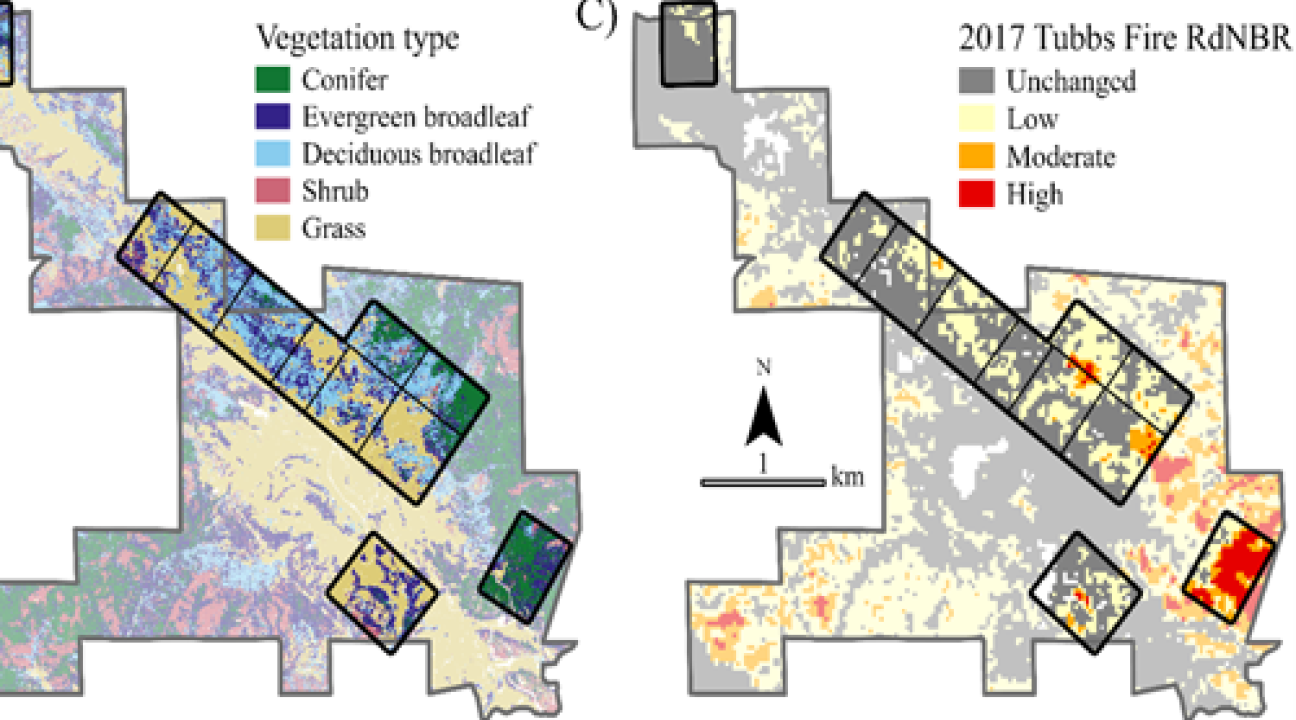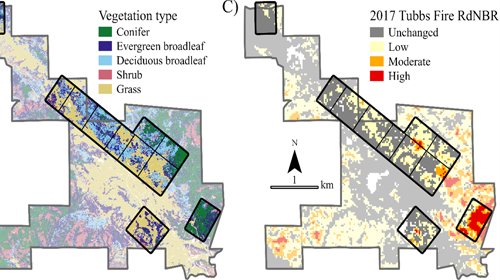Wildfire shapes vegetation assemblages in Mediterranean ecosystems, such as those in the state of California, United States. Successful restorative management of forests in-line with ecologically beneficial fire regimes relies on a thorough understanding of wildfire impacts on forest structure and fuel loads. As these data are often difficult to comprehensively measure on the ground, remote sensing approaches can be used to estimate forest structure and fuel load parameters over large spatial extents. Here, we analyze the capabilities of one such methodology, unoccupied aerial system structure from motion (UAS-SfM) from digital aerial photogrammetry, for mapping forest structure and wildfire impacts in the Mediterranean forests of northern California. To determine the ability of UAS-SfM to map the structure of mixed oak and conifer woodlands and to detect persistent changes caused by fire, we compared UAS-SfM derived metrics of terrain height and canopy structure to pre-fire airborne laser scanning (ALS) measurements. We found that UAS-SfM was able to accurately capture the forest’s upper-canopy structure, but was unable to resolve mid- and below-canopy structure. The addition of a normalized difference vegetation index (NDVI) ground point filter to the DTM generation process improved DTM root-mean-square error (RMSE) by ~1 m with an overall DTM RMSE of 2.12 m. Upper-canopy metrics (max height, 95th percentile height, and 75th percentile height) were highly correlated between ALS and UAS-SfM (r > +0.9), while lower-canopy metrics and metrics of density and vertical variation had little to no similarity. Two years after the 2017 Sonoma County Tubbs fire, we found significant decreases in UAS-SfM metrics of bulk canopy height and NDVI with increasing burn severity, indicating the lasting impact of the fire on vegetation health and structure. These results point to the utility of UAS-SfM as a monitoring tool in Mediterranean forests, especially for post-fire canopy changes and subsequent recovery.



